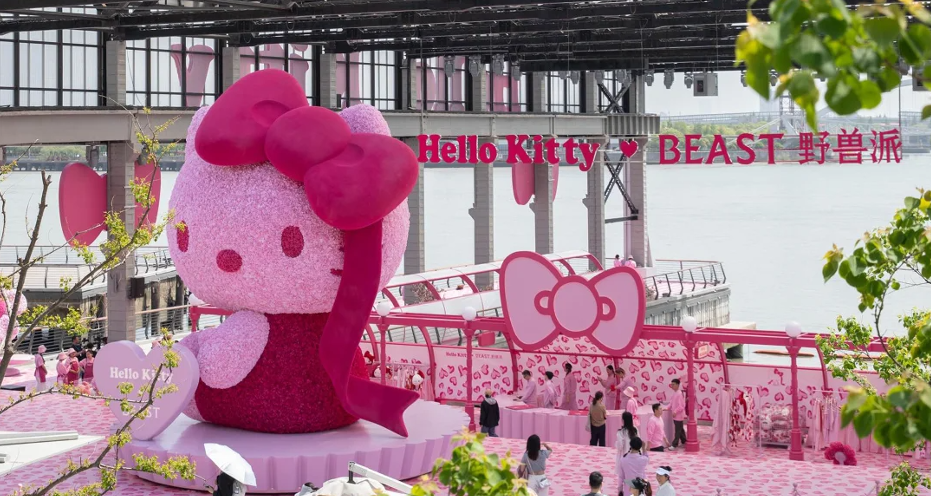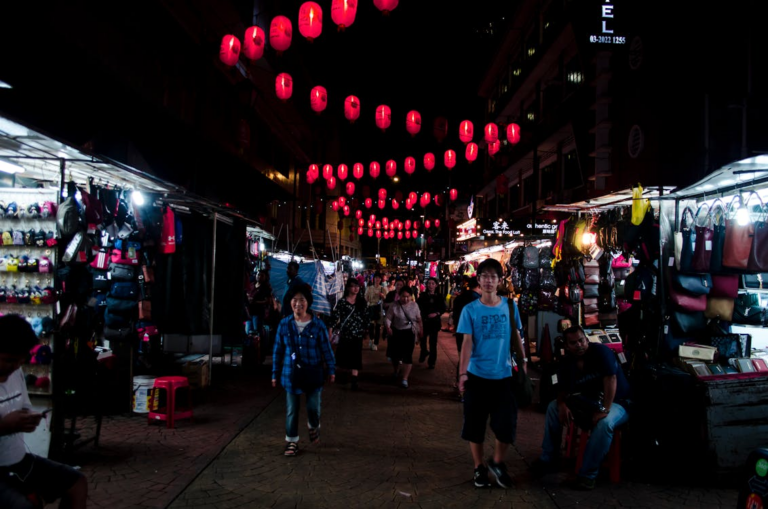In April 2025, Beast 野兽派, a leading Chinese lifestyle brand known for its premium floral products and artistic collaborations, launched a high-impact Hello Kitty pop-up campaign on Shanghai’s West Bund. Tapping into the strong cultural resonance of Hello Kitty in China, the activation aligned with the ongoing Shanghai Flower Show. It quickly gained traction on social media, generating nearly a million views on Xiaohongshu under the hashtag #野兽派HelloKitty. The event received such positive response that the original three-day schedule (April 18–20 2025) was extended by an additional week.
Download our guide to Chinese gifting habits
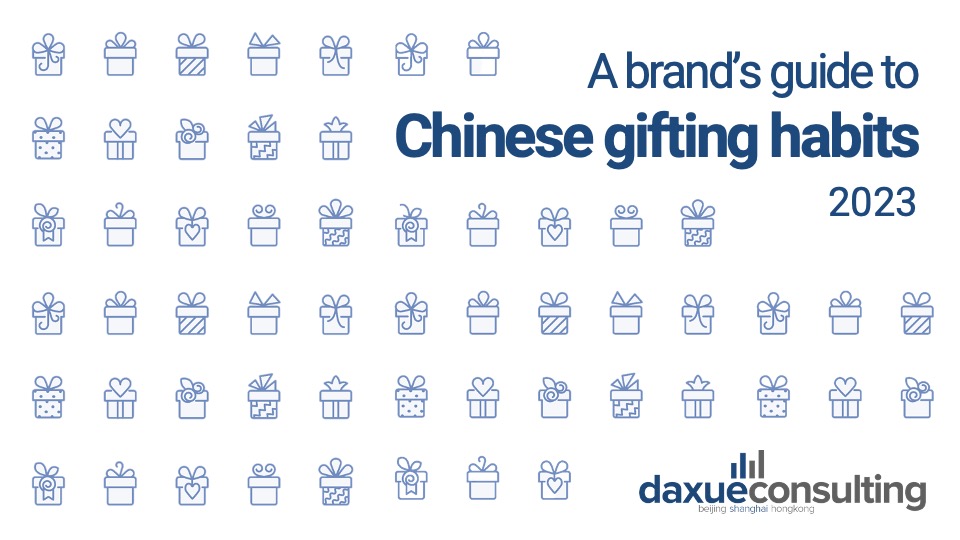
In China, the Japanese character Hello Kitty has been enormously popular. It has appeared on every conceivable product, ranging from pencil cases and chainsaws to passenger jets. However, this evergreen popularity is only achievable through continuous collaboration and revitalization. The Beast and Hello Kitty campaign explores how the IP is leveraged for Chinese Gen Z.
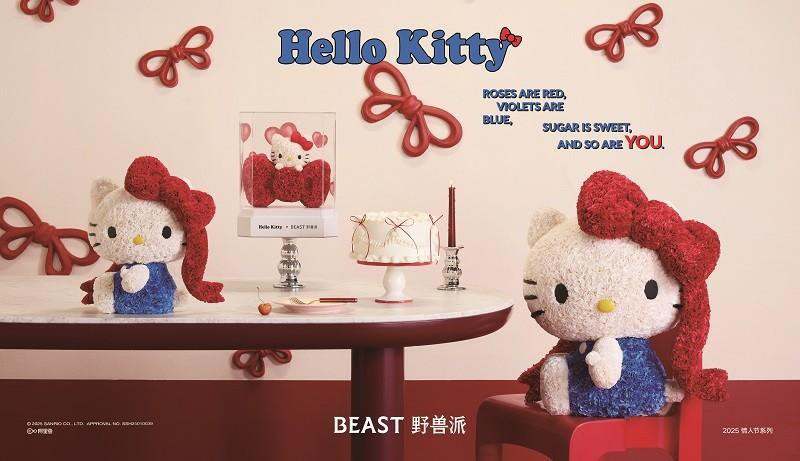
How oversized IP is making its way into Chinese cities and social media feeds
The iconic IP itself was a major driver of the campaign’s appeal. In this activation, Hello Kitty was a landmark. A towering, photogenic pink Hello Kitty statue made of flowers turned the area into a social media playground. It was designed to go viral across different platforms including Xiaohongshu and Douyin.
What made this campaign particularly effective was its embrace of oversized marketing, the use of large-scale, and visually disruptive installations to create instant impact and social buzz. Brands like Gentle Monster have mastered this approach in China, using surreal and oversized sculptures at their Chengdu and Shanghai stores to drive foot traffic and dominate social media feeds. Similarly, in early 2025, the Hajime Sorayama exhibition in Shanghai went viral, thanks to its massive metallic sculptures. Beast applied the same principle to display the IP and set the campaign apart from traditional IP collaboration’s offline events, which largely contributed to the high proportion of UGC.
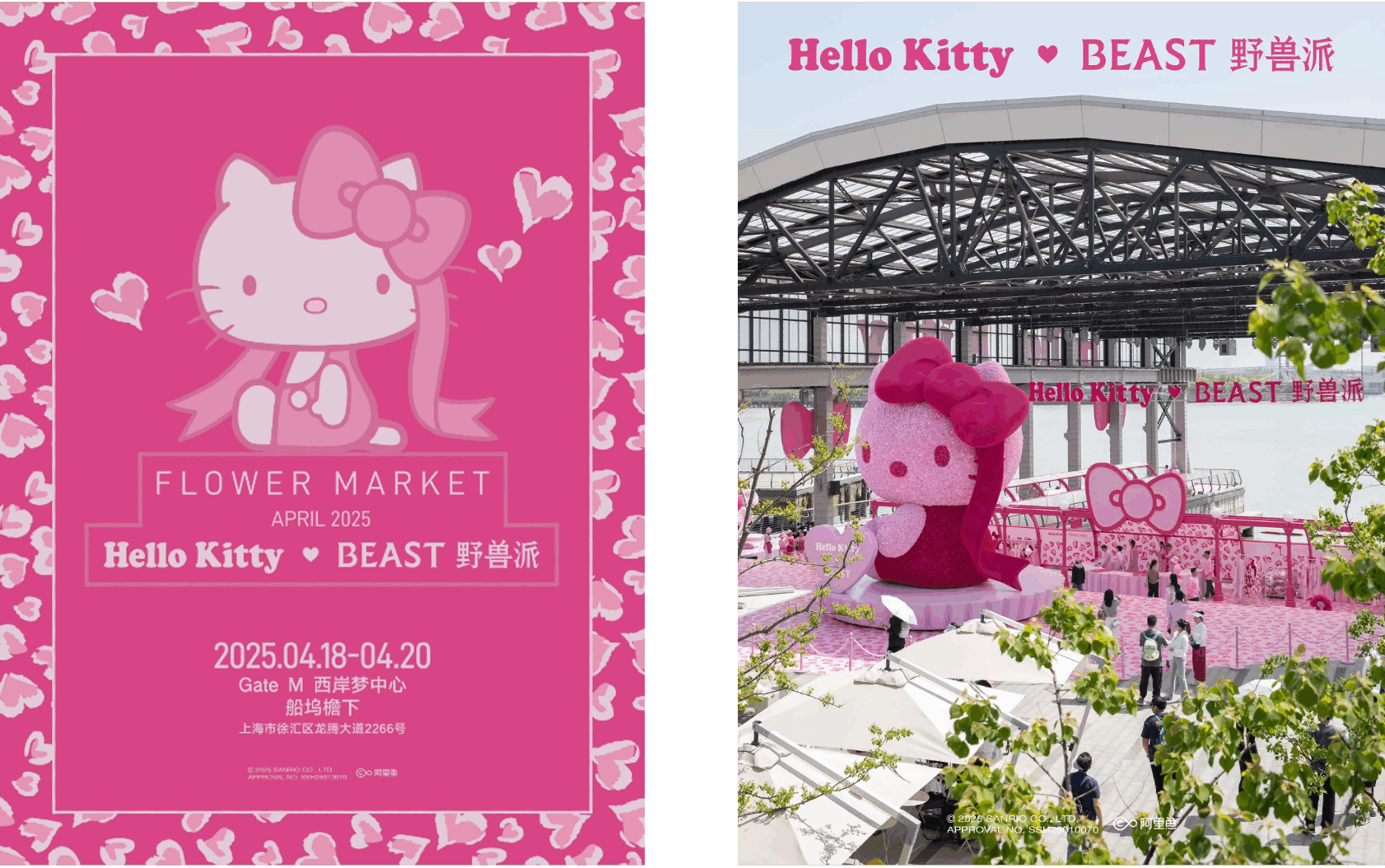
Why the pet-friendly campaign was a win-win
The campaign was staged at Gate M West Bund Dream Center, Shanghai’s newest riverside cultural hub, transformed from a historic dockyard into a vibrant lifestyle destination. Crucially, the location is known for its pet-friendly amenities, such as water bowls and resting areas, making it a natural fit for brands looking to tap into Shanghai’s growing community of pet-loving and lifestyle-conscious consumers.
Beast smartly leveraged this environment, crafting a visually striking and culturally resonant experience. By offering pet-friendly photo opportunities featuring Hello Kitty, the campaign encouraged pet owners to share images of their furry companions on social media, significantly amplifying the event’s reach and driving even greater engagement.
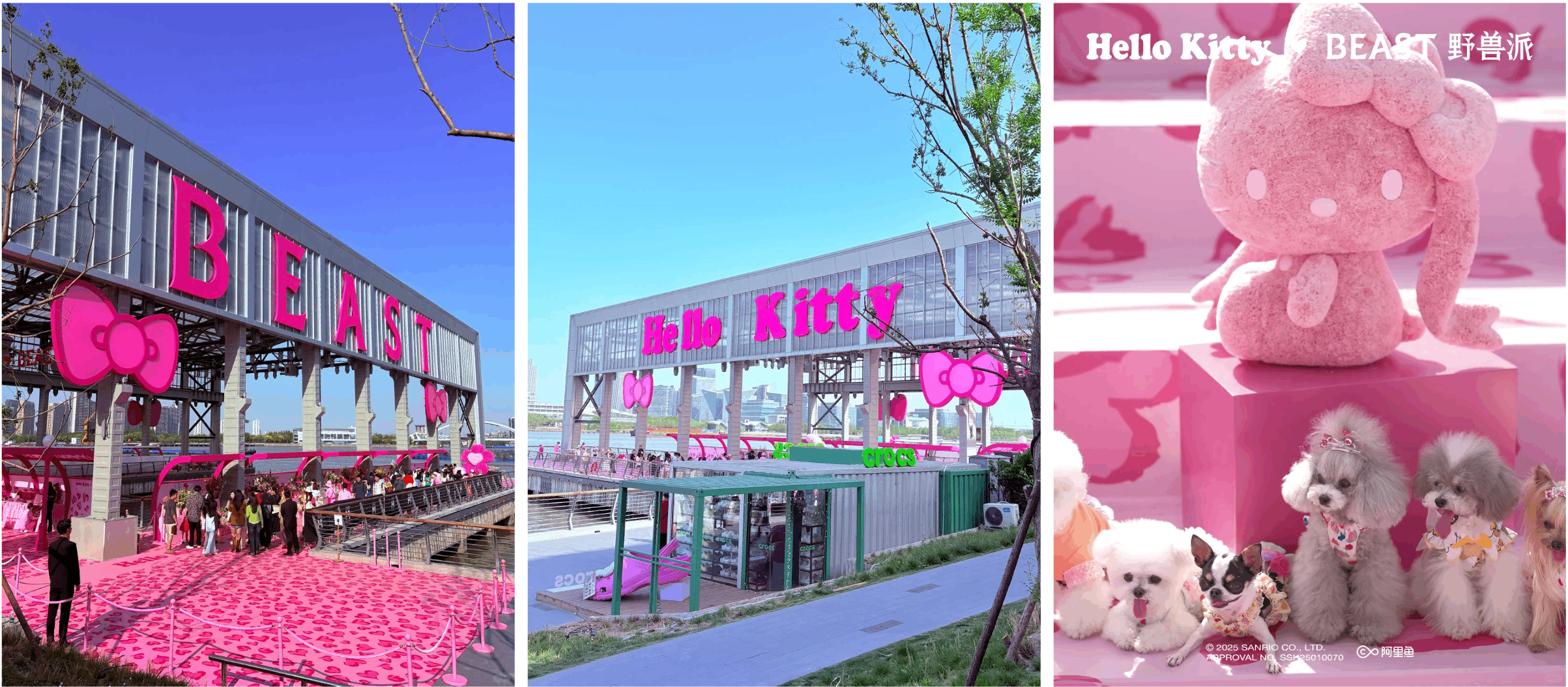
From legacy to virality: How AI made Hello Kitty a Chinese Gen Z icon
Hello Kitty as a symbol of cuteness
Hello Kitty is a fictional character produced by the Japanese company Sanrio and first designed by Yuko Shimizu. Although she’s portrayed as a cat, in 2014, Sanrio declared that Hello Kitty was not a cat, but a little girl. The character’s first appearance on a product was on a vinyl coin purse, introduced in Japan in 1974. The character is a staple of the ‘Kawaii’ aspect of Japanese popular culture, similar to China’s ‘Meng’ culture.
Hello Kitty 2.0 and how this shift reflects the latest trends in China
While Hello Kitty has long represented innocence, softness and nostalgia, her 50th anniversary sparked a creative revival. Starting in 2024, a new wave of brand collaborations, exhibitions, user-generated content and AI remixes reintroduced her to a new generation. Hello Kitty was no longer just a symbol of cuteness. It became a flexible cultural canvas, tapping into new aesthetics and even irony for today’s consumers.
Gen Z creators took her image into new territory: AI-generated mashups of Hello Kitty with local brands and unexpected aesthetics; lifestyle content that pairs her with streetwear, office satire, and even anti-capitalist humor, turning her into a symbol of playful rebellion.
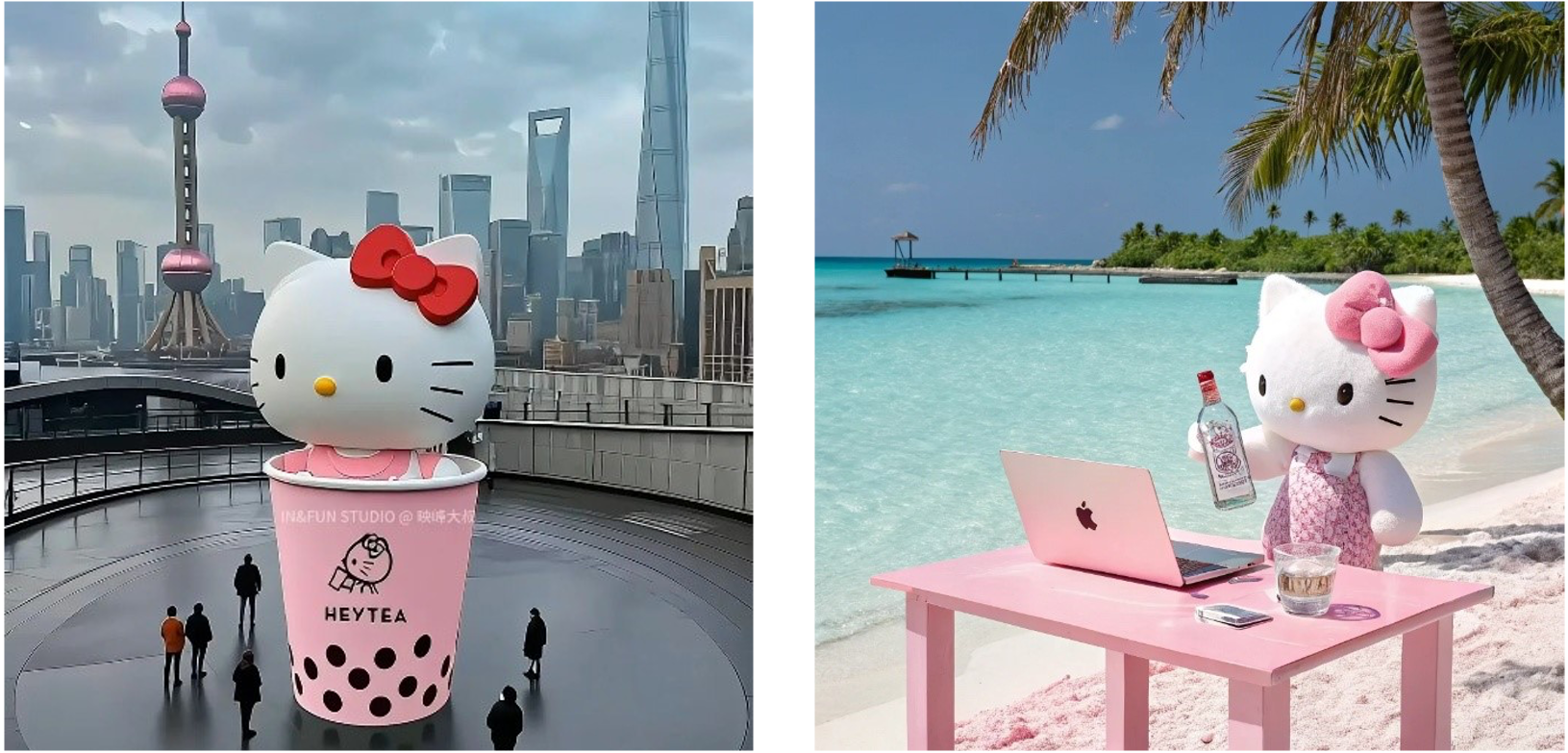
This shift of Hello Kitty in China closely aligns with cultural trends. Digitally fluent, visually sophisticated, and deeply expressive, this generation approaches brands and icons as tools for self-expression and personal storytelling. Hello Kitty’s resurgence taps directly into several key trends shaping this audience’s engagement:
- Y2K Aesthetics: With early-2000s fashion and design firmly back, Hello Kitty’s pastel palette and retro charm make her a natural fit. She embodies both nostalgia and novelty.
- Ironic detachment: Hello Kitty’s lack of a mouth has become a symbol of silent resistance. Among Gen Z, she’s often used as a meme or visual punchline to express burnout, disillusionment, or quiet rebellion. This is especially true for content tied to “班味” (office smell) and “内卷” (downward spiral of overwork), the viral anti-office-aesthetic that critiques hustle culture (known as “996” culture) with humor and sarcasm.
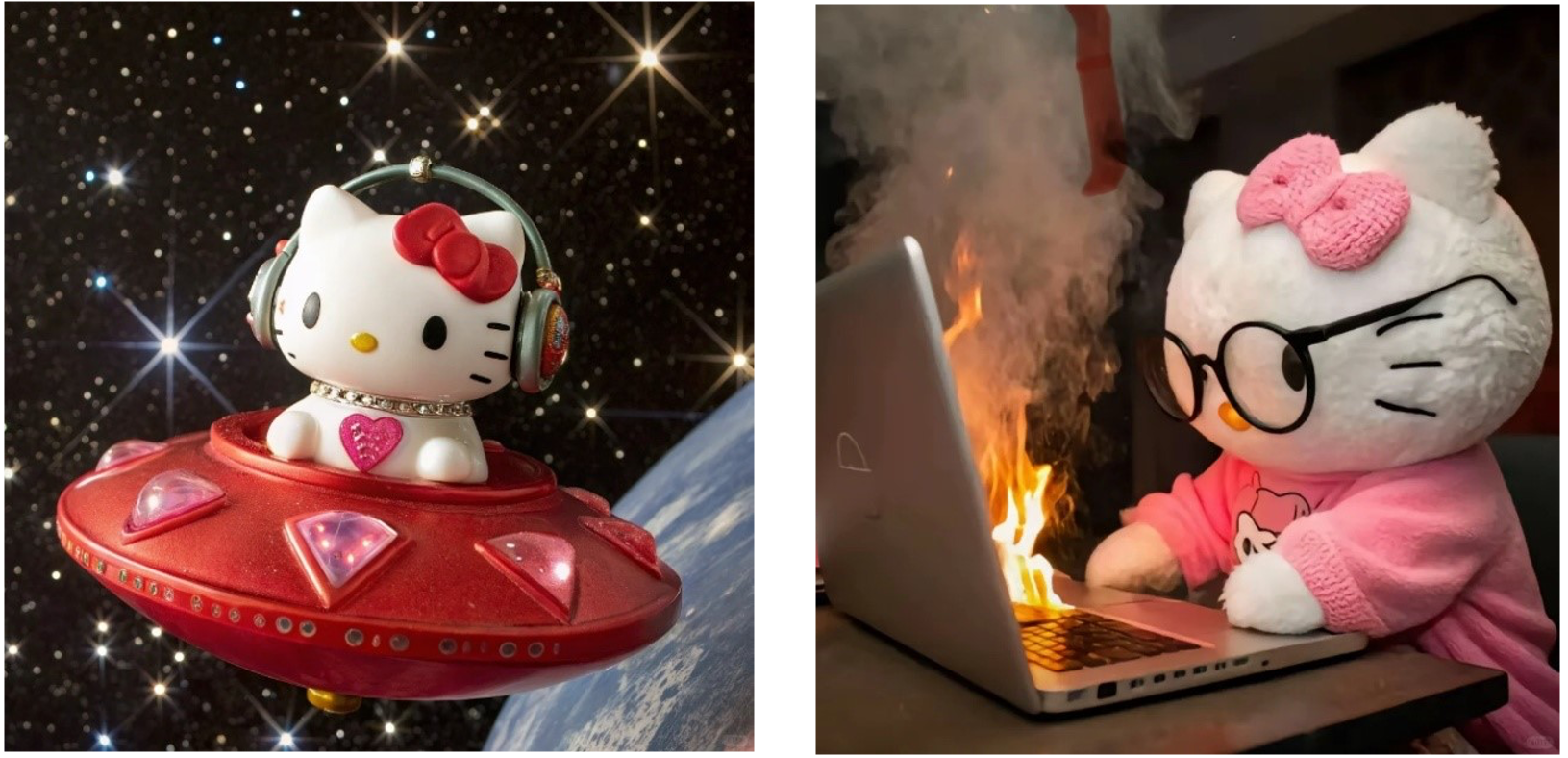
What brands can learn from Hello Kitty in China
The Hello Kitty and Beast collaboration offers valuable lessons for brands navigating today’s cultural landscape:
- Heritage IPs can remain culturally relevant if they’re willing to evolve. Nostalgia alone isn’t enough. Iconic IPs like Hello Kitty need to be reimagined to reflect the values, humor, and aesthetics of new generations.
- Local integration drives emotional resonance. By embedding the campaign within the local cultural calendar and physical landscape, Beast created a sense of place and relevance that went beyond surface-level branding.
- Gen Z craves platforms for playful self-expression. When given the right canvas, they won’t just consume a brand, but remix it, recreate it, and amplify it in ways that feel personal and participatory.



